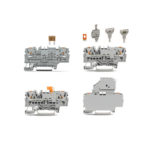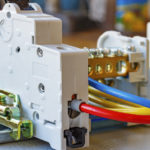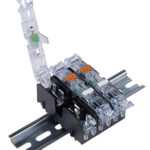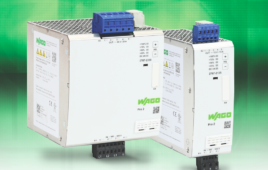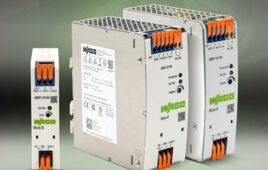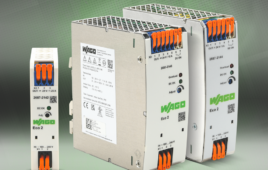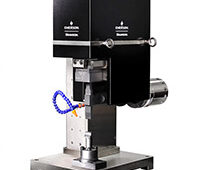Industrial power supplies, power converters, and complementary power components for automated operations include electrical as well as electronic components that …
• Accept electrical power from utility-company mains or intermediate power components
• Employ transformers to change the electricity’s voltage — as well as rectifiers for dc output if applicable
• Condition the electricity — and address the issues of voltage surges and electromagnetic interference or EMI
• Regulate the voltage through any mains supply or load variations
• Send the power (now in more usable currents, frequencies, and voltages) still onward to the disparate settings and machines they serve
• In some cases, power supplies that are uninterruptible (UPSs) store power in case of utility grid blackouts
• Stand at the ready to cut power if there’s a fault
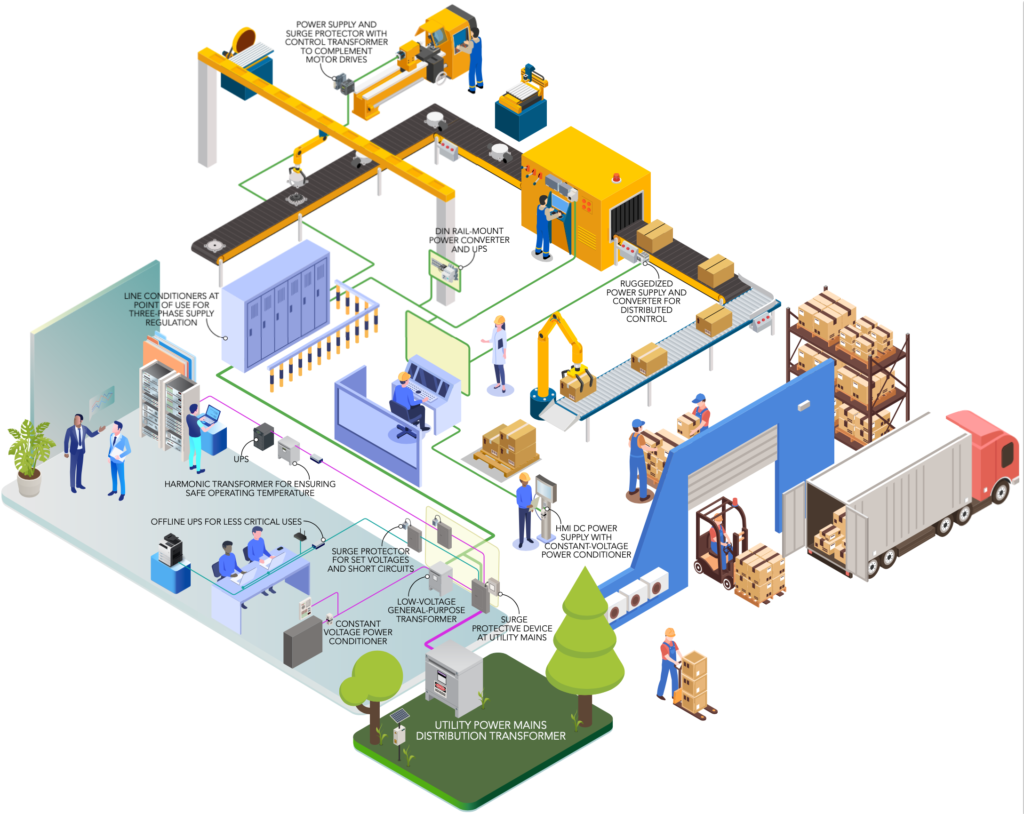
Power supplies and power-quality components abound in industrial settings.
Industrial applications have widely varied power needs. Uses of ac power abound, but most industrial equipment and hardware employs dc power. Of course, utility power upon which automated facilities run is generated and supplied as ac. So this alternating current is accepted by components called power supplies that convert the power to direct current … and then shape it for use by other industrial components in the installation.
The three major power-supply types include unregulated, linear, and switching — and these use various operating principles. But switching power supplies are most common in industrial applications; the other power-supply types are rare or (for many applications) obsolete. Switching (switch-mode) power supplies or SMPSs are preferred for their small size and high efficiency, even to 80% and beyond. Their formats abound … though the most widely used are DIN rail-mounted.
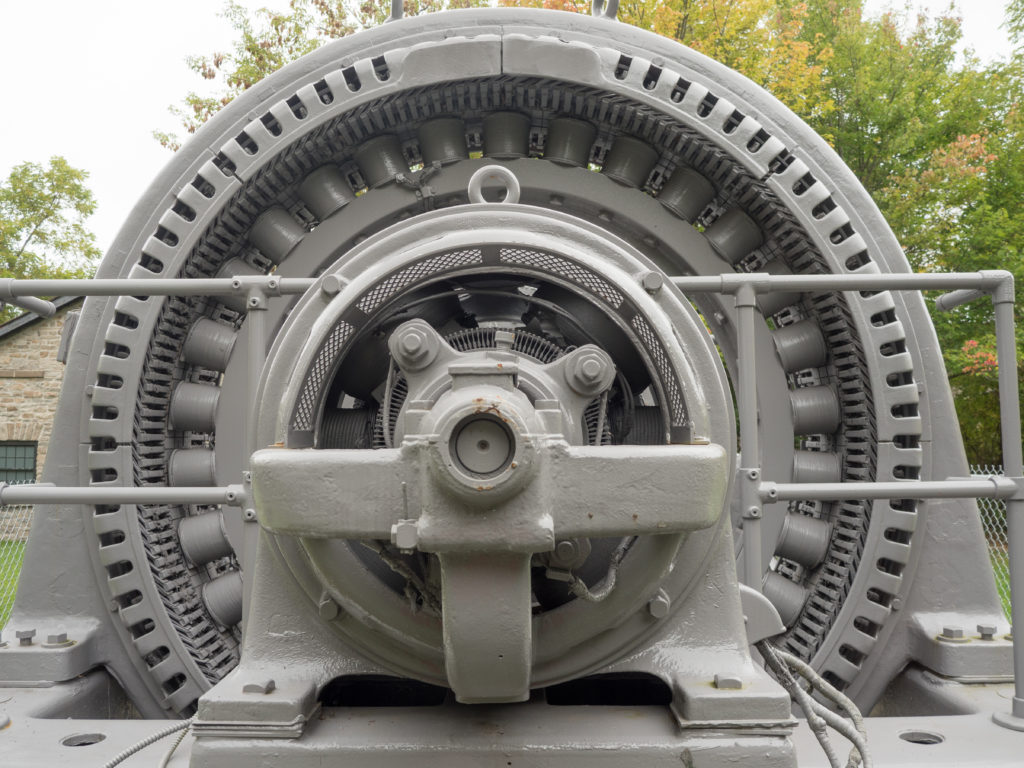
Modern electricity generation involving turbine generators turn rotor electromagnetic coils (at positive and negative pole states) inside a stator. Upon passing bars on the stator, the rotor magnetic field induces currents in one of two directions. In the U.S., such generators on the power-utility grid have copper-bar trios and rpms setup to output standard three-phase 60-Hz utility power. Hydroelectric power-generator image via Dreamstime
Though myriad industrial automation components run off dc power, ac is the top choice for distribution because it’s most efficiently transmitted … and its voltage is most easily stepped up and down with transformers.
Linear power supplies execute voltage regulation by employing a transformer to convert input ac power to some voltage that’s useful to another component or machine. Then the supplies employ rectifiers and filters for final ac-to-dc conversion and smoothing functions — typically at some voltage that slightly exceeds target output to prevent undervoltage faults. Controlled heat dissipation via a variable shunt or series resistor provides basic voltage regulation … though at the cost of decreased efficiency.
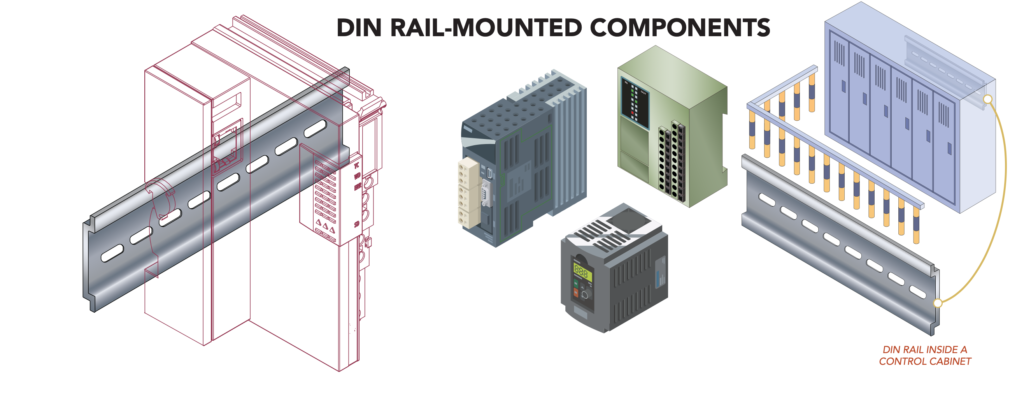
Industrial power supplies and other electrical components they serve typically mount on DIN rail in cabinets and on panels.
In contrast with linear power supplies are switched power supplies — our focus here. These convert input ac to a higher-frequency supply (to many kHz) using rectifier and (for ac outputs) inverter electronics. Then they quickly switch power between the load and onboard inductors and capacitors. Voltage conversion is via a transformer that (because of the high frequencies involved) can be quite compact.

Diode-only rectifiers let current pass in solely one direction … so convert ac power (with continually varying direction) into dc power with current held in that one direction. The catch is that such simple devices sans other electronics can generate output exhibiting problematic fluctuations.
Common formats for switched power supplies
Most DIN rail-mounted industrial power supplies efficiently convert line power and other potentially compromised input ac voltage into regulated dc power. This dc power in turn is shaped for use by attached industrial-automation components for monitoring, automation, control, assembly, and test functions. Switching power supplies are known for their high efficiency, low weight, and highly compact design.
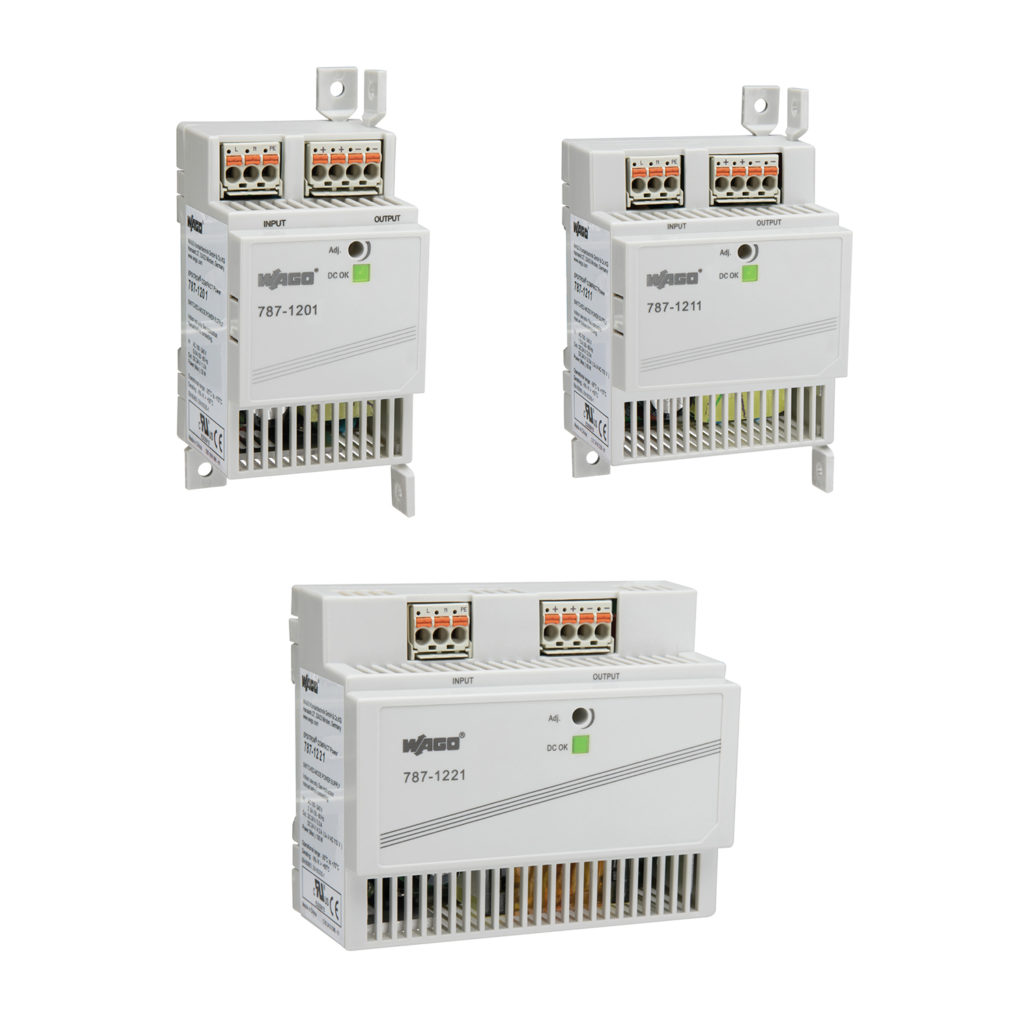
WAGO’s 12-Vdc COMPACT power supplies are efficient and economical for standard applications. They complement WAGO’s extensive portfolio of 24-Vdc power supplies with the same space-saving COMPACT housing and pluggable picoMAX connectors. The 787-1201, 787-1211 and 787-1221 shown here feature fast and vibration-proof push-in CAGE CLAMP connections. Mounting options abound for DIN-35 rail or chassis mounting. Each power supply comes with worldwide approvals including UL 508 and EN 60335-1.
Switching power supplies for DIN rail mounting install in control cabinets and on panels built for ruggedness in automated plant settings. The most common DIN rails are standardized 35-mm tall metallic mounting tracks that accept installation of electrical and electronic industrial components such as circuit breakers, distributors, power supplies, and control components. Such DIN rail in control panels and electrical cabinets helps ensure that components are safely and neatly wired and organized.
Industrial power supplies can be found in all industrial control cabinets.
As explained in more detail later in this Design Guide section, the name DIN derives from Deutsches Institut für Normung — the German Institute of Standards — which published the original geometrical specifications for the rail. DIN rails have standard widths of 7.5 mm or 15 mm and a standard thickness of 1 mm, specified by the EN 60715 standard. The backs of DIN rail-mounted industrial power supplies are designed to latch to DIN rail.

DIN rail-mounted industrial power supply variations
Myriad power-supply brands and models exist to satisfy market and design-specific requirements. The following are some factors that design engineers should consider when choosing industrial power supplies.
Power-supply phase: The required number of phases and type of input (dc or ac) as well as output voltage, current, and number of ports must all be specified, as these vary by power-supply model.
Power that is ac may be supplied as single, dual, or three-phase power. Industrial power supplies come in corresponding single, two, and three-phase units. A single-phase power supply will feature single input ports for the earth, live, and neutral. In contrast, three-phase units feature three live ports in addition to the neutral and earth ports. Also available are dc to dc converters that convert dc power from one voltage to another. In fact, industrial power supplies can deliver various outputs — and are usually available in series that deliver 5, 12, 24, and 48 Vdc. Current ratings also abound.
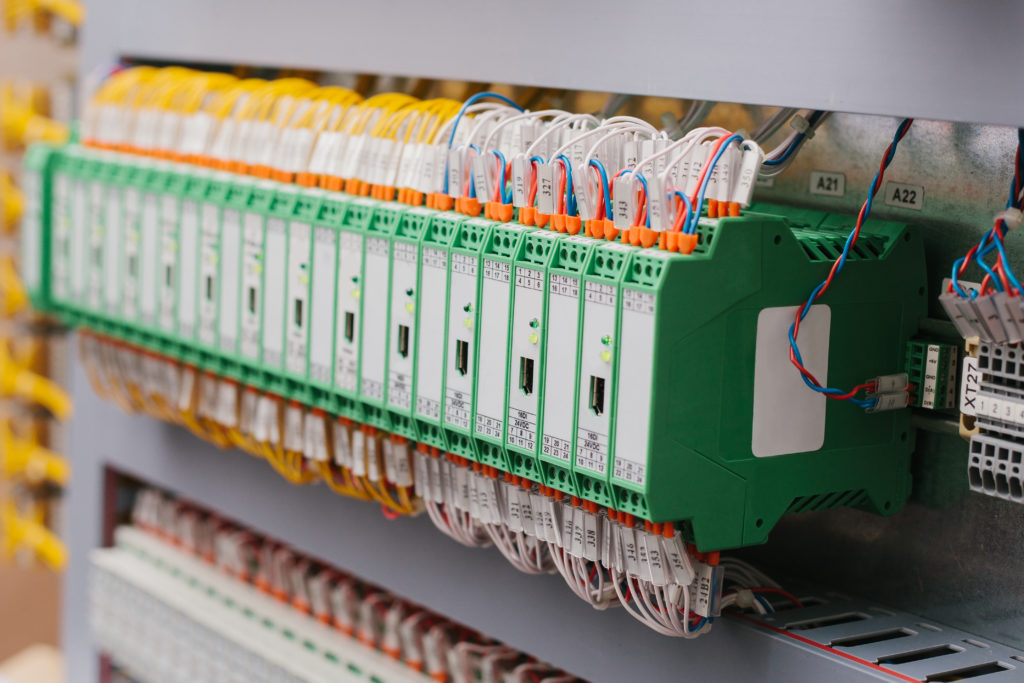
The power phase and output-port count are the first two parameters that dictate which power supplies are appropriate for a given application.
Power-supply output-port count: Some DIN rail-mounted industrial power supplies let designers directly connect more than one dc-powered device. These units feature multiple output ports.
Dimensions: All industrial power supplies are small, but some are designed for extra compactness. Design engineers should make careful note of the space allotted to a given power supply before making a final selection. The installation orientation, airflow within the designated area, and nearby equipment also demand consideration.
Power-supply regulations, approvals, ratings, and certifications: DIN rail-mounted power supplies work in a wide variety of environments. Especially challenging or exotic ambient temperatures, humidity, vibrations, dust levels, and electromagnetic activity must be documented upfront — and power supplies capable of withstanding these conditions (and satisfying safety codes) specified. After all, safety is paramount in all applications and must never be neglected or compromised. That’s why it’s recommended that engineers get secondary verification that all procured power supplies have all the necessary safety approvals and certifications for a given market, setting, and application.
Consider one standardized measure of industrial power-supply safety — that of IEC’s Hazard-Based Safety Engineering (HBSE) classifications. HBSE quantifies the dangerousness of electrical power sources and the need for safeguards. HBSE Class 1 situations are those for which exposure to the electrical power source isn’t painful … and there’s little chance of electrical ignition. HBSE Class 2 situations are those for which exposure to the electrical power source is painful but not injurious … and there’s some chance of electrical ignition, but the potential spread of fire is limited. HBSE Class 3 situations are those for which human exposure to the electrical power source will indeed cause injury … and both electrical ignition and spread of fire are quite possible.
Additional power-supply features: Certain applications may necessitate specialty power-supply features. For example, some installations that locate the power supply in a hard-to-access position may benefit from a remote control feature. Other nonstandard power-supply features include integrated IO-Link ports, hot-swap plug connectors, and output-voltage adjustment capabilities.
Advantages of industrial switching power supplies
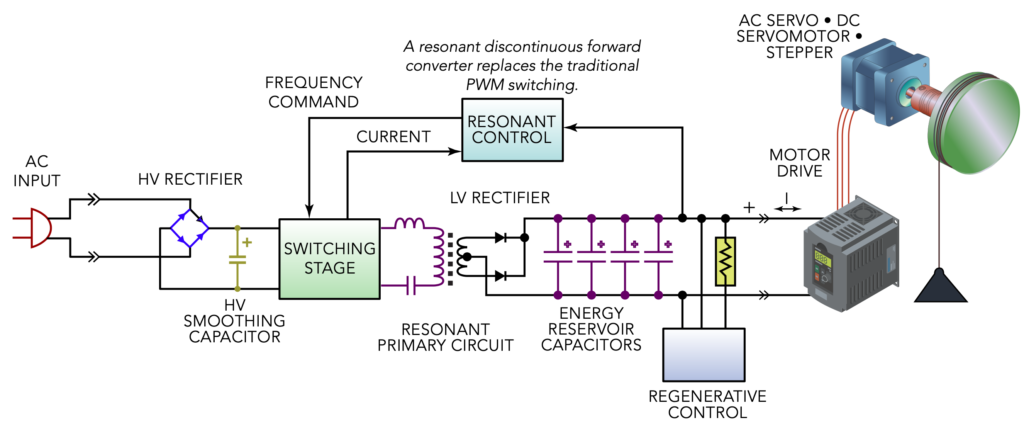
DIN rail-mounted switching power supplies are indispensable to various industrial and manufacturing operations. Switching power supplies are usually far more efficient than their unregulated and linear counterparts, reaching efficiencies 90% or better. Their energy efficiency is further boosted by how they consume minimal power under off-load conditions.
Switching power supplies are also straightforward to install and operate. Those built for DIN rail mounting can quickly and securely attach to DIN rails using few or no tools. Most such units feature spring clamps, clips, or push-in terminals that allow them to be installed by hand. Wiring to the mains and load is just as easy as most units feature screw or spring clamp terminals that are compatible with ring terminals, connectors, and stripped wires.
Reliability is another benefit. Most DIN rail-mounted switching power supplies available today contain no mechanical parts. (This significantly reduces the risk of failure and need for maintenance — for longer equipment life.) Plus such power supplies typically include safety circuitry that protects internal subcomponents as well as connected industrial components.
Other benefits include physical compactness as well as universality. DIN rail-mounted power supplies are extremely small, light, and compact, making it possible to install them in tight spaces. Being DIN rail-mounted lets them fit in with other equipment within electrical cabinets and control panels. Industrial power supplies sometimes billed universal power supplies can also accept ranges of voltage inputs. For example, some switching power supplies can work with the voltages of power grids from around the world … whether it’s the 120 V of the U.S. or the 230 V or Europe. ⚙️ Contribution by Etiido Uko • Mechanical engineer
You may also like:
Filed Under: Power supplies

